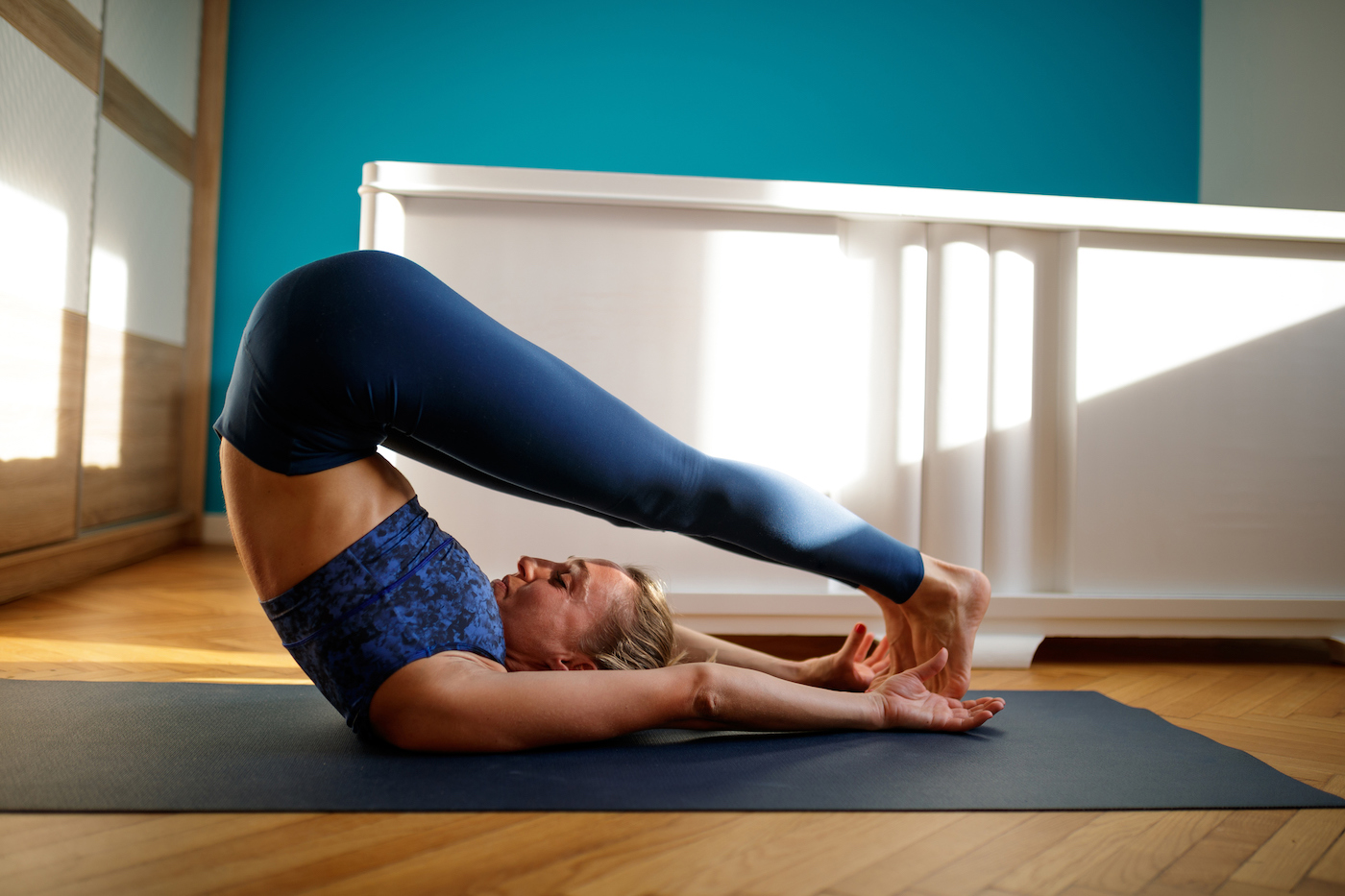
The Yoga Sutras of Patajali are a collection of 196 sutras written in Sanskrit. These texts were created in the early centuries CE, by Patanjali, a sage who synthesized the wisdom from older traditions of yoga. These sutras were originally a work in progress. They are now one of the most important resources for practicing yoga worldwide.
The Yoga Sutras are comprised of four chapters. The first chapter is dedicated towards enlightenment. The next four chapters cover the steps to achieve the goal. 52 sutras describe the benefits of meditation, yoga, and pilates (niyama). The 54/55 sutras detail Ashtanga and Karma yoga. The two last sutras describe the benefits of meditation on a regular basis.
The Yoga Sutras of Patanjali are considered to be the foundational text for yoga. They contain 196 verses and are the basis of the practice. Although the sutras are thought to have been written around 400 B.C., many scholars believe that Patanjali did not invent yoga. Instead, he was a great presenter of the art. The sutras have five levels or pads.
Samadhi is the eighth limb. Pure contemplation, the highest goal of yoga and the most important one, is the ultimate goal. In the Sutras nirbija–samadhi is also called seedless contemplation. It is when the body is totally separate from the spirit. This means the mind is not bound by ego or matter.

Yoga is spiritual practice. The Yoga Sutras are the foundation for it. It involves following the principles of Nature. The three nature qualities are sattva (rajasa), tamasva (tamasva). The first and most important quality of nature is sattva, yama. It is also the hardest to attain. It's hard to understand the purpose of the other three, but ahimsa is the highest of the four.
The Yama, Niyama, and Third sections make up the first book of Yoga Sutras. The first section is a biography about Patanjali, the famed yogi. The yoga sutras, the most important, are found in the second book. The books also contain information about the history of yoga. In addition to the historical background, the sutras include a detailed discussion about the origins of yoga.
In the original text the Sutras from Patanjali are split into four distinct sections: Mahabhashya. Pranayama. Bhashya. The Mahabhashya chapter is the third and most important. This chapter outlines the theory, practice and stages of enlightenment. The fourth chapter is the defense of Panini.
The Yoga Sutras, which are Patanjali's most beloved part of the Patanjali-inspired text, are found in the second half. Although the Sanskrit language word sutras are translated, their meaning is "thread". The Sutras make up part of Hindu Scripture. It is the core of yoga. It was composed between 250 BCE and early centuries in the first millennium.
Yoga Sutras can be dense, complicated, and difficult to understand in terms of content and language. It is highly recommended that you have a commentary on Yoga sutras because of their difficulty. It is however not essential to the Yoga sutras. Although there is disagreement about the translations of Yoga sutras, the text remains the heart of the book. Some versions of the book use the word "asana" to refer to a single posture, while others have different versions of the same phrase.

The Yoga Philosophy Sutras of Patanjali are considered one the most important yogic texts. Studying the Sutras is a great way to learn ancient techniques and practice yoga in the modern age. These Sutras are relevant to modern yoga. It is up to you how you choose to practice the Yoga Sutras. There are many benefits to learning the Yoga Philosophy from Patanjali.
Patanjali's insight can be found in a vast number of sacred texts. His writings define the eight limbs of yoga, the five types of yogi bodies, and the five qualities of a yogi's mind. These Sutras offer a wealth of inspiration to modern yogis and should be read. This book will teach you the fundamental principles of Yoga.
FAQ
Do Men Need A Gym Membership?
For men, a gym membership is not required. But, if you do join a gym, it will make your money go further.
Many gyms offer free trial memberships so you can try the facilities out before paying for anything.
The gym is open to all, and you don't have to pay anything. Your membership can be cancelled at any time you choose to love it or not.
What does milk do for men?
Consider what other uses you might have for your milk next time that you buy it. You might also find it helpful to stop drinking coffee.
Both children and adults have been shown to benefit from milk. The nutrients in milk include vitamin D, calcium potassium, phosphorous and magnesium.
It promotes weight gain, digestion, bone strength, and aids digestion. Milk products can help adults have better immunity systems and less illness.
Milk is also rich in lactose, so people who cannot digest this sugar easily can enjoy its benefits without experiencing stomach problems.
Try drinking more milk instead of soda or juice. The extra calcium and vitamin D found in milk can help strengthen your teeth and bones.
Plain low-fat milk can be used to make yogurt if you don’t like the taste. Yogurt can be a great substitute for milk, as it has fewer calories and more protein.
Probiotics are also found in yogurt, which help with digestion and boost immunity.
A glass of warm milk is a great way to get a good night's sleep if you're having trouble getting to sleep. Warm milk relaxes the muscles and increases serotonin levels. It will give you a restful night.
How often should you exercise per week?
It all depends on how much time and what kind of exercise you like. The general rule of thumb is to exercise aerobically 3 - 5 days per week. It is important not to overdo it. You will get the maximum benefits from your workouts if you do not exercise consistently.
Which exercises are best suited for me?
It all depends on what type of fitness goals you have. Some people are more focused on endurance activities such as running, cycling and swimming. Others love lifting weights or using resistance bars. There are many exercise programs on the market today. Find the best option for you.
What is the best 7-day workout program?
Three days per week should be spent on cardiovascular training, including running, biking, swimming, and two strength exercises using free weights, weight machine, as well as one flexibility/core exercise such as yoga, Pilates. It's essential to do each activity at least once a week. Each session should not last more than 45 minutes.
Cardiovascular Exercise: Running/Biking/Swimming
You should aim to get at least 60 mins of cardio exercise per week. Try to do 75 minutes per semaine for the best results. Cardio exercise can improve blood flow and stimulate muscle development.
Strength Training
Cardio exercises work on the heart and lungs. Strength training works on the muscles and bones. Strength training builds lean muscle mass, which helps burn calories even when resting.
Flexibility & Core Workouts
Core and flexibility exercises are great ways of strengthening your whole body. Both yoga and Pilates can be great choices.
Statistics
- According to the American Heart Association, blood pressure should be checked at least once every two years, beginning at age 20. (my.clevelandclinic.org)
- Are You One of the 20% of Guys (mh.co.za)
- 10 pounds in a month is likely during a lean bulking phase, especially for beginners. (muscleandstrength.com)
- Candidates and applicants must pass all four tests at 70% (minimum level) to graduate from Basic Deputy U.S. Marshal (BDUSM) Training. (usmarshals.gov)
- Cardmembers earn 5% Back at Amazon.com with a Prime Credit Card. (amazon.com)
External Links
How To
How do I lose fat by exercising?
Exercise can help you burn calories and increase your metabolism.
Exercise at a moderate intensity to safely lose weight.
These tips can help you to burn fat while training:
-
Cardio exercises include swimming, running or cycling.
-
For 30 minutes, do it three times a week.
-
You can lose weight by adding strength training to the routine.
-
Avoid intense workouts. You can build muscle without breaking down muscle tissue.
-
When exercising, make sure to drink lots of water. Water is essential for flushing out toxins and keeping your body hydrated.
-
After exercising, you should drink low-fat protein drinks. Protein shakes can help boost energy and repair muscles.
-
So you don’t feel hungry, eat smaller meals throughout your day.
-
Don't skip breakfast! Skipping breakfast can lead to fatigue and sluggishness.
-
Take care to your mental well-being. Stressful situations may slow down your metabolism.
-
Keep a positive attitude. Research shows that overweight people gain more weight if they believe they are overweight than those who believe they look good.
-
Get enough sleep. A lack of sleep makes it difficult to lose fat.
-
Keep active. Move around at least once an hour.
-
Maintain a healthy diet. Eat right to feel satisfied and full for longer.
-
Find ways to relax. Your body won't release stress hormones that cause muscle tissue destruction if you have a tense mind.
A balanced diet will provide all nutrients that are necessary for growth.
You should eat six small meals per day rather than three large ones. This gives your body more time to digest the food you eat.
For strong bones to be maintained, you need approximately 500mg of calcium per day. Calcium is available in dairy products like milk, yogurt, fortified soy beverages, orange juice, cereal, bread, and cereals.
Calcium can be found in leafy green veggies, beans, tofu and nuts as well as seeds, nuts and cheese.
Vitamin D is necessary for the body to absorb calcium. Vitamin D can be found in egg yolk, fatty fish, and other fortified foods.
Vitamin E plays an important role in skin health. Vitamin E can be found in vegetable oils as well as wheat germ oil, peanuts and almonds.
Your body needs zinc to maintain normal immune function and heal wounds. Zinc is found in oysters, legumes, meats, whole grains, and seafood.
Zinc deficiency could cause fatigue, nausea, vomiting, and depression.
Eating too much sugar causes insulin resistance, which increases blood glucose levels. Insulin resistance leads to weight gain.
When there is a high level of free radicals, insulin resistance can develop. Free radicals refer to molecules that contain unpaired electrons. They can damage cell membranes and other body parts.
The most common sources of free radicals include food additives.
Free radicals can lead to cancer and heart disease, diabetes mellitus, arthritis, asthma, and premature aging.
To prevent free radical damage, eat a healthy diet rich in antioxidants. Antioxidants protect against oxidative damage.
Vitamin C is found in citrus fruits and beta carotene is found in carrots.
Other antioxidant nutrients include selenium, copper, manganese, and zinc.
Selenium helps to protect cells against free radicals and oxidative stress. Selenium can also be found in Brazil nuts (tuna), liver, kidneys and shrimp.
Copper protects the eyes, brain, lungs, liver, and red blood cells. Copper is also found in poultry, meat, and organs.
Manganese forms an essential part of bone structure. Manganese is found in brown rice, spinach, bananas, prunes, raisins, oatmeal, and lentils.
Zinc is essential for normal growth, reproduction, wound healing, and average growth. Zn is found in lean cuts of meat, white fish, poultry, and eggs.